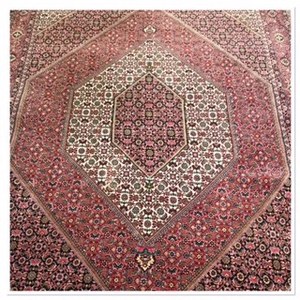The Kurds view themselves as descendants of the Medes who would eventually become part of the Persian Achaemenid Dynasty. Through this line of descent they practiced Mithraism, one of the earliest known monotheistic religions, of whom the biblical “Three Wise Men” ,or “Magi”, were priests. There are a few origin legends with one from an Armenian historian: “According to the chronicler Mighdisî, the first town to be built after Noah's Flood was the town of Judi, followed by the fortresses of Sinjar and Mifariqin. The town of Judi was ruled by Melik Kürdim of the Prophet Noah's community, a man who lived no less than 600 years and who travelled the length and width of Kurdistan. Coming to Mifariqin he liked its climate and settled there, begetting many children and descendants. He invented a language of his own, independent of Hebrew. It is neither Hebrew nor Arabic, Persian, Dari or Pahlavi; they still call it the language of Kürdim. So the Kurdish language, which was invented in Mifariqin and is now used throughout Kurdistan, owes its name to Melik Kürdim of the community of the Prophet Noah. Because Kurdistan is an endless stony stretch of mountains, there are no less than twelve varieties of Kurdish, differing from one another in pronunciation and vocabulary, so that they often have to use interpreters to understand one another's words.” Jewish sources on the other hand details the Kurds as being the descendants of King Solomon’s angelic servants (Djinn). These were sent to Europe to bring him five-hundred beautiful maidens, for the king's harem. However, when they had done so and returned to Israel the king had already died. As such, the Djinn settled in the mountains, married the women themselves, and their offspring came to be known as the Kurds.
Whichever legend is true, one thing is certain, the Kurds are a strong and fiercely independent tribe that exerts immense influence where ever they are. Most Kurds not only speak their own Kurdish dialect, but also the language of the country they inhabit, be it Persian, Arabic, etc. Throughout history they were either assisting rulers to become the ruler or resisted those that would not allow them their independence and freedom to remain their authentic selves. History is full of their defeats and victories and they produced many strong political candidates, such as Saladin of the Ayyubid Dynasty, Shah Abbas of Persia and also Karim Khan of the Zand Dynasty in Iran, our rugdealer’s maternal forefather.
The Kurds are well known for their carpet weaving of which Senneh and Bijar are but two examples, with these being woven in Iran. Kurdish carpets use medallion patterns, however, far more popular are the all-over floral, Mina Khani motifs and the "jaff" geometric patterns. The beauty of Kurdish designs are enriched by high-chroma blues, greens, saffrons as well as terracotta and burnt orange hues made richer still by the lustrous wool used. The traditional the Kurdish rug uses Kurdish symbols. It is possible to read the dreams, wishes and hopes of the rug maker from the sequence of symbols used.
Sources:



